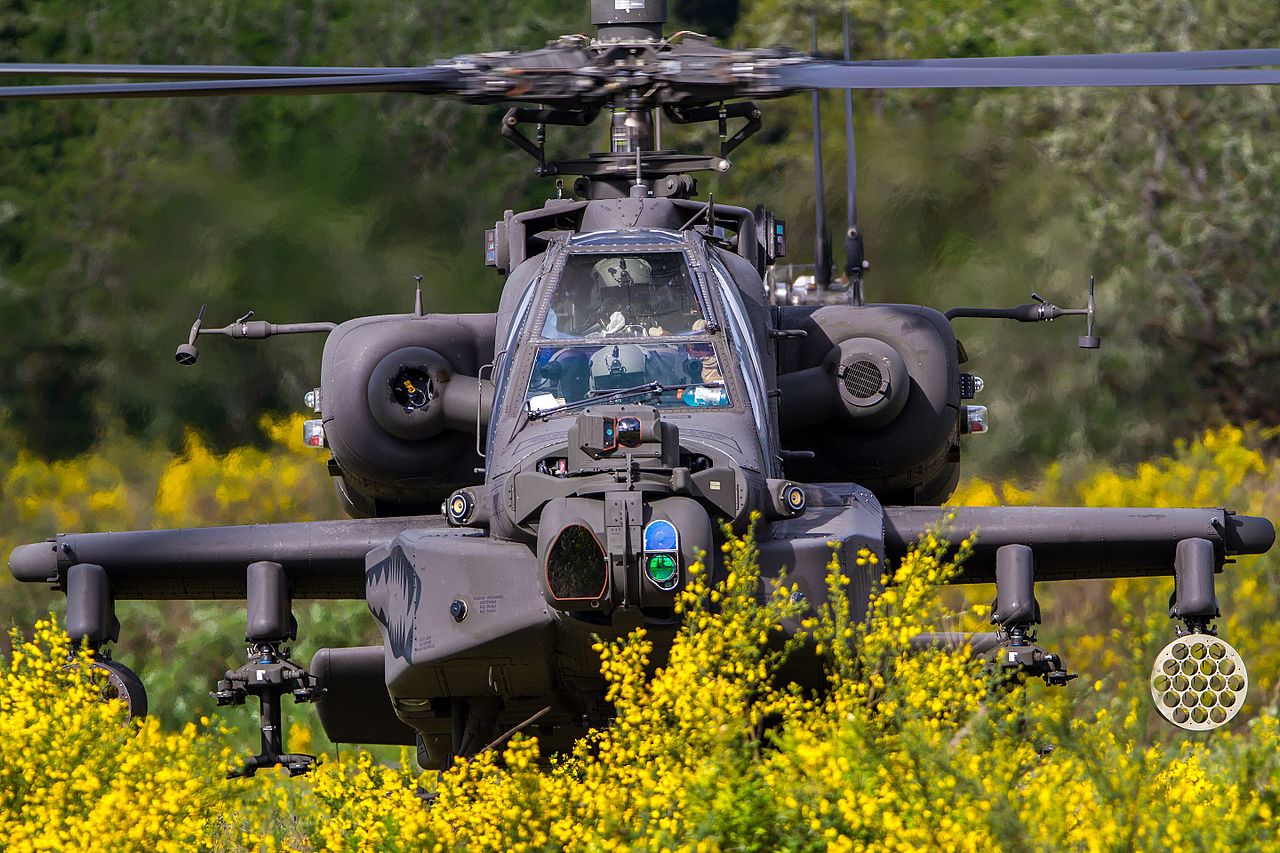There are many scenarios in which tube artillery can engage attack helicopters.
Sometimes called helicopter gunships because of their heavy armament, modern attack helicopters have two primary roles: first, to provide direct and accurate close air support for ground troops; and second, the anti-tank role to destroy grouped enemy armor. Attack helicopters are also used as protective escorts for transport helicopters, or to supplement lighter helicopters in the armed reconnaissance roles. In combat, an attack helicopter is projected to destroy targets worth around 17 times its own production cost before being destroyed.
But how do helicopters avoid being shot down?
‘Nap of the earth flying, mostly,’ says Jay Snead, an aviation expert on Quora.
‘The great feature of a helicopter is its ability to hover behind cover. if you can’t see it, you can’t hit it. The Apache Longbow mounts a sensor tower above its rotors so that it can observe without exposing itself to view.
‘They can hide behind a ridge or down in the trees to make themselves an unattractive target for a ground-based missile.

‘To defend itself from other aircraft, its ability to hide close to the ground makes it difficult for a high-flying aircraft to get a radar lock on it. When under attack, it can deploy flares to decoy heat-seeking missiles. It can even carry Sidewinder or Stinger missiles to shoot back.’
Nevertheless, attack helicopters can still be shot down by tube artillery. An anonymous former US Army soldier recalls on Quora;
‘We actually ran a fire mission once that simulated a 155mm engagement of a terrain-masked helicopter known to a forward observer to be hovering below a ridgeline at about 2 km. The known position was relayed to FDC where they had to think about a solution. Then the helo was engaged with a low trajectory HE projo and fuze solution timed to function in an airburst just after the ridge position. The resulting rain of steel would have neatly taken down any helicopter in that location.
‘There are many scenarios in which tube artillery can engage helicopters. Wise helo drivers don’t loiter and put themselves into such positions. Tube artillery is amazingly agile in the right hands.
‘In this scenario, an FO detected the helo long before the opposing forces were even aware of the presence of the artillery. The artillery and helo were not in the line of sight. The helo would have needed external assistance to detect the presence and location of the batteries.
‘You might think you’re safe down there. You’re not.’
Photo by U.S. Army, Pinterest

